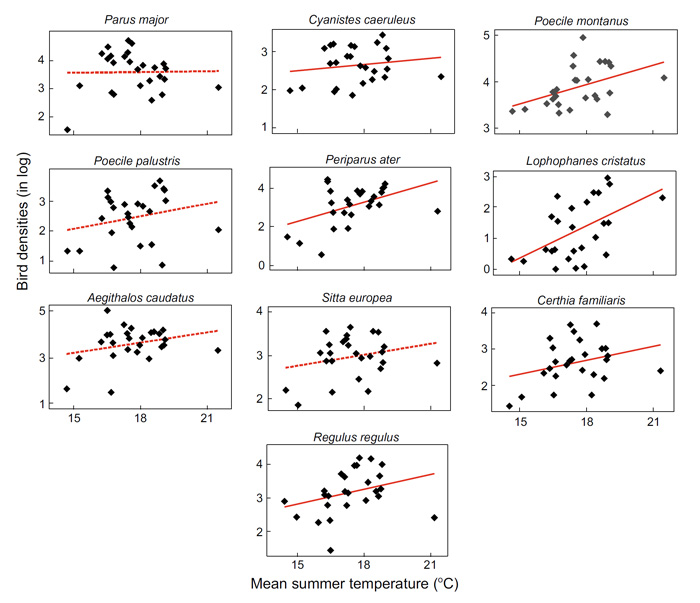| Tweet | Follow @co2science |
Paper Reviewed
Askeyev, O., Askeyev, A. and Askeyev, I. 2018. Recent climate change has increased forest winter bird densities in East Europe. Ecological Research 33: 445-456.
Introducing their new study, Askeyev et al. (2018) write that "many researchers are inclined to believe that global climate change has decreased the abundance of birds over the past few decades." However, they note there are multiple potential problems in reaching such a conclusion. As an example, they note that studies measuring bird abundance often rely upon very limited temporal data, such as annual Christmas Day count surveys. Other studies are confounded with locational issues that artificially raise or lower the number of birds. Alternatively, much data are the subject of collection from volunteers and/or lack a standardized counting method. Altogether, each of these issues highlights the limitations of drawing conclusions about not only the sign of bird abundance trends, but any potential causes of such trends as well.
In overcoming many of the limitations noted above, Askeyev et al. (2018) investigated the impact of climate change on the population dynamics of ten bird species that have been monitored in the Tartarstan Republic of Russia by the same observers -- the authors themselves -- for the past 26 years. At least once per month during this period, they utilized standardized research methods to determine the density of these various bird species on fixed randomly-selected plots covering a total area of approximately 1200 km2. And what did the results of their analysis reveal?
Focusing on winter bird abundances, Askeyev et al.'s data show that the winter densities of all ten species increased over the period of record as defined by linear regression trends. With respect to what factors might be driving these trends, the scientists state that significant temperature increases during winter, as well as during the breeding season, combined with an overall increase in annual temperatures "are likely reasons for [the] significant increase in the number of birds" that they observed (see figure below).
Finally, in discussing the significance of their findings and in evaluating it against alarmist claims that rising temperatures are harming bird populations, Askeyev et al. write that "our data do not support conclusions that the abundance of boreal bird species have decreased." And given the strength and complexity of their research methods and analysis, that is one conclusion even climate alarmists can take to the bank!

Figure 1. The relationships between winter bird density and summer temperature. Solid lines represents significant relationships and dashed lines non-significant relations. Source: Askeyev et al. (2018).




